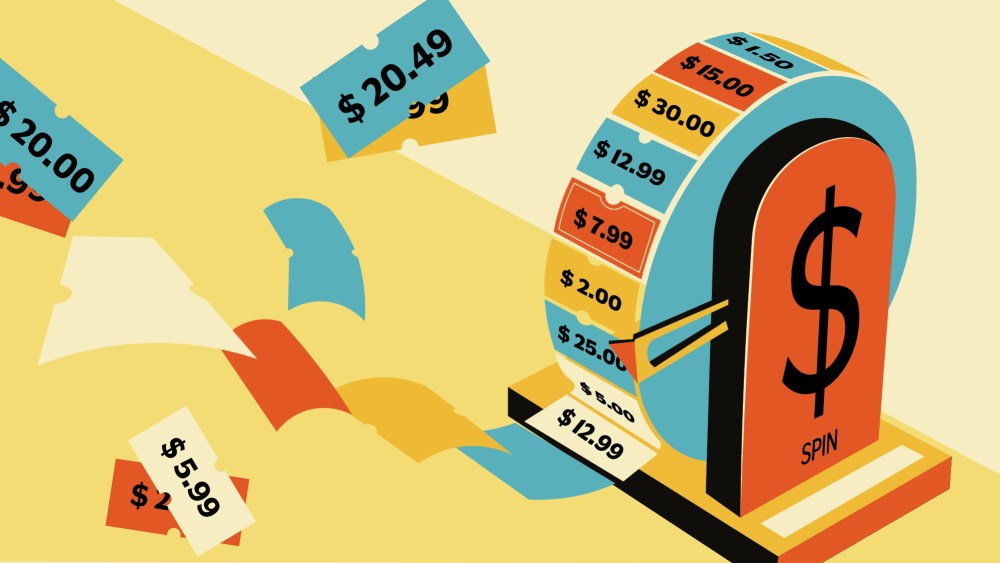Tariffs have made headlines — and raised retail prices — all year. In the beauty landscape, though, that’s only one piece of the price equation.
After years of consistent price increases, consumer sentiment is beginning to wane for the beauty category. Add on top of that the rapidly changing distribution ecosystem, an increasingly promotional environment and an increasingly saturated market.
It all adds up to a tale of two price strategies. E.l.f. Beauty, for example, added $1 to every product price across the portfolio. “We communicated that to our community. The community response was overwhelmingly positive in terms of our transparency. We are continuing to optimize our supply chain, less to do with tariffs and more to do with a rapidly growing global business,” said chief executive officer Tarang Amin in August.
Conversely, a few brands have dropped their prices. BeautyStat, for example, rebranded and lowered all of its prices in February. Its hero product, the Universal C Skin Refiner, for example, now retails for $62. (It previously sold for north of $80).

BeautyStat’s Universal C Skin Refiner.
Courtesy of BeautyStat
“We reduced our prices as we saw that consumer purchases spiked when we were on promotion but flattened when not,” said Ron Robinson, the brand’s founder and CEO. “We wanted our pricing to be more accessible to consumers even when not on promotion. Since we brought our prices down, we’ve seen upticks in unit growth.”
Similarly, scalp care brand Jupiter traded down to mass with a Target Corp. retail partnership earlier this year. “We took what was a 9.5-ounce bottle that retailed for $25, started selling a 14-ounce bottle for the same price on Amazon, and lowered the price to $15 in Target,” said cofounder Ross Goodhart of the strategy. “After we made that increase in our bottle size, we got a really great response. Consumers felt we were listening to the feedback.”
That pivot was also born out of consumer insights, such as shoppers in the mass market are looking for more premium solutions. “We ultimately did a lot of market research,” Goodhart said. “For a number of years, we’ve worked on not only improving our formulas but bringing down costs to bring them to an environment like Target. It was a large, addressable market.”
There is broader sensitivity to price in the consumer landscape, said Jeff Lindquist, managing director and partner, Boston Consulting Group. “After several years of heavy price hikes, we’re now in what our consumer practice is calling the ‘new volume reality,’” he said. “List prices, across consumer product categories have, on average, been raised 30 percent since 2019. That is a huge amount of inflation.”
From a brand perspective, the goal should be to capture market share as opposed to inflating retail sales with price increases, he said. “What brands are doing now is protecting price surgically, through size and formats. It’s also about justifying prices through innovation, and getting really disciplined on promotionality.”
On the consumer side, there’s very little trading between the mass and prestige channels, said Larissa Jensen, senior vice president and beauty industry adviser, Circana. “Depending on the category, there are areas where consumers are somewhat ‘trading down’, but they’re not going from prestige to mass,” she said. In skin care, for example, there’s a greater focus on value and shoppers are going for lower-priced items within the prestige channel. Fragrance is seeing the opposite with a focus on higher concentrations and luxury items.
“It’s also not so much as a connection to tariffs and price increases because there are a lot of different levers each channel is pulling to capture share. Price is only one piece of it,” Jensen said, noting that beauty is in much earlier innings of grappling with tariffs than other sectors like toys, housewares or sports equipment.
From a channel perspective, pure-play e-commerce platforms are nabbing share across price points, though some of those can be a slippery slope for brands.
“Brands are leaning into those retailers that are known for their value, which are Amazon and TikTok Shop, and they are offering price advantages for brands on a nearly everyday basis,” said Nicole Fourgoux, Stride Consumer Partners’ operating partner.

Jupiter products.
Courtesy of Jupiter
“What I’m seeing is a lot of brands leaning into all kinds of promotional strategies. It’s very hard to actually take your price down, especially in prestige, as it has a direct impact on brand image and perception. Many of them, as a short fix, are leaning into promotional strategies in partnership with retailers,” Fourgoux said. “You’re getting promotional emails much more frequently and for much deeper discounts.”
It won’t necessarily look the same as in years past, however. “More DTC brands are trying to do personalized promotions — instead of blanket promotions that everyone gets, that means targeting your consumers in your CRM who have the highest propensity to spend or activate based on a promo, and giving them personalized promotions that you then don’t have to offer to the broader public,” Lindquist said.
Innovation will also play a role, he said. “That means not just ingredients, but different formats like minis, refills, multiuse products. It could mean extended shade ranges, it could mean hybrids. Things that make a product multibenefit, or a different format that fits your new occasion or a different size, reinforces the value proposition for the consumer that justifies the continued spend.”
#Beautys #Pricing #Strategy #Playbook
